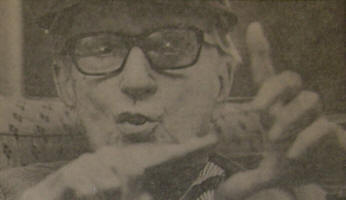“The Ross Place”
“Van Horne-Ross House from Historic Pewee Valley”
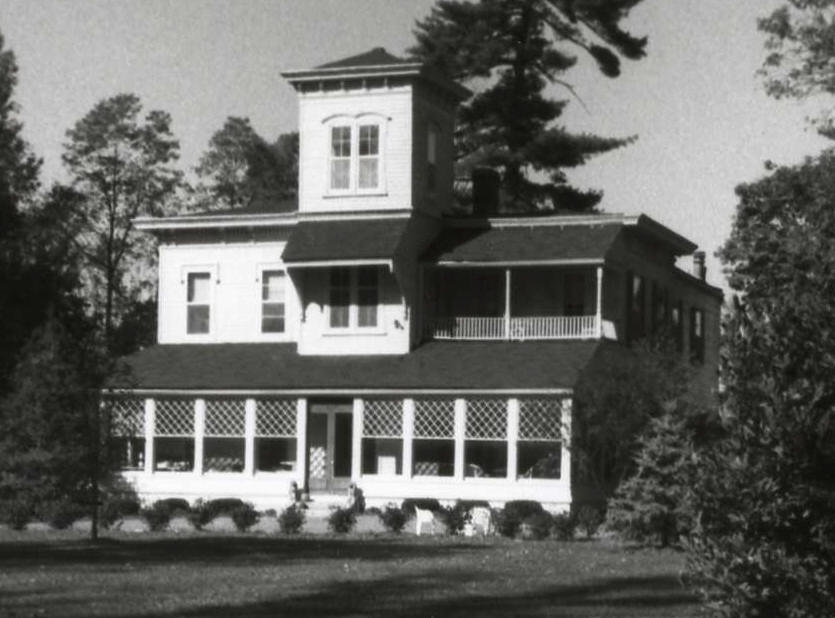
As far as we can tell, Annie Fellows Johnston never mentions the Van Horne-Ross House in any of the “Little Colonel” stories. However, both she and her daughter, Mary G. Johnston, were friends with the Ross family who lived in the house from 1903 until the late 1970s. Annie Fellows Johnston mentions “The Ross Place” in passing in Chapter IX of the “Little Colonel’s House Party“.
The house once sat on 40 acres at the intersection of Central Avenue and Peace Lane, near Edgewood, Twigmore and The Beeches, where Annie and Mary Johnston lived from 1911 until their respective deaths in 1931 and 1966. In the 1970s, the property was developed to form the Rosswoods subdivision. The house was saved and still sits in its original location.
A Statement of Significance submitted to the National Register of Historic Places by Historic Pewee Valley provides the following information about the property, the house and its owners:
The Van Horne-Ross House occupied a small portion of what was originally a forty-acre property first developed in 1856 by William H. Walker, a Louisville businessman. Walker’s house burned in 1863. Between 1866, when Walker sold the land, and 1870, when John D. Van Horne bought it, the property changed hands at least three times. It is presumed that Van Horne built the present house, although possibly one of the interim owners, Jonas H. Rhorer and Charles B. Cotton, both Pewee Valley land speculators, or Dr. J.E. Helm was responsible.
John Van Horne, a wealthy businessman who served as general superintendent of the Western Union Telegraph Company in Louisville, commuted to work from his Pewee Valley residence during the early 1870s. He served on the Pewee Valley Council from 1871 to 1874…
The 1880 Census lists the following as occupants of the house:
- John Van Horne, age 56, born in new Jersey, Vice President of Western Union Telegraph
- Mary Van Horne, his wife, age 57
- Nellie Van Horne, daughter, age 23
- John Van Horne, son, age 19
- Elsy Barber, domestic servant
John Van Horne’s obituary, published December 18, 1902 in the “Courier Journal,” provides a good idea of just how important he was, and how much he was esteemed, by the Western Union Telegraph Company:
The funeral of Mr. John Van Horne, former vice president of the Western Union Telegraph Company, was held yesterday afternoon at 2 o’clock at Christ Church Cathedral, and after the reading of the simple and impressive burial service of the Episcopal Church, the body was taken to Cave Hill and laid in its final resting place.
Among those who came to pay the last sad tribute to their friend and colleague were a number of the highest officials of the great company with which he was connected for so many years. All of them started in the work to which their life had been devoted when they were boys and the days of the telegraph as a factor in commercial America had not dawned. It was in these struggles that they came to know John Van Horne, and when the news of Mr. Van Horne’s death reached them, they hurried to this city to pay tribute to him.
The body was brought to Louisville from Pewee Valley yesterday at noon, and was taken from the First-street depot to the church, where it rested until the time set for the funeral.
The services were conducted by the Rev. Dr. Mortimer Benton, and consisted of the reading of the burinal service, before which Miss Anita Muldoon sang “Lead Kindly Light.”
When Dr. Benton concluded, Miss Muldoon sang “Nearer, My God, To Thee,” after which the body was taken to the cemertery and interred by the side of Mr. Van Horne’s wife.
There were many floral designs, among them being one sent by Gen. Thomas T. Eckert, formerly president of the Western Union; Mr. James Merrither, formerly general superintendent of the Southern division, and Mr. Robert C. Clowry, the president of the company.
There were handsome designs from the superintendents of the Southern and Western divisions, as well as every official present. Among those present were the following representatives of the Western Union Telegraph Company: T.F. Clarke, vice president, of New York; T.P. Cook, general superintendent of Chicago; F.H. Tubbs, superintendent, and W.J. Lloyd, assistance superintendent of Chicago; T.B. Tree, superintendent, of Richmond, Va.; J. M. Stephens, superintendent, of Atlanta; I.N. Miller, superintendent, of Cincinnati; J. Compton, superintendent, and J. Terhune, assistant superintendent, of Nashville; G.J. Frankel, superintendent, of St. Louis; M.T. cook, secretary to the general superintendent; H.G. sickles and Mr. C.S. Rhodes, superintendent of the Cincinnati division of the Big Four railroad.
The Postal Telegraph Cable Company was represented by J.W. Kates, superintendent, of Richmond, Va., and W.J. Slater, manager of the Louisville office.
John Van Horne and his wife, Mary L., who died in 1898, are buried in Cave Hill Cemetery, Section A, Lot 700, Graves 8 and 5. Buried with them are their son, John Douglas Van Horne, who died in 1927, and we presume his wife, Mary K., who died in 1948.
In 1903, the house was sold to the “William Ross family, who intended to use it for a summer home but soon moved there permanently,” according to the Statement of Significance submitted to the National Register of Historic Places:
William Ross, an executive with a Louisville Seed Company, served intermittently on the Pewee Valley City Council from 1904 to 1908. A son, Herbert Ross who continued to live in the house until the late 1970s, was an accomplished painter who studied in Chicago, New York and Paris with other artists of note.”
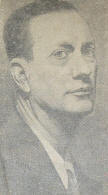
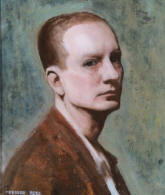
Two self portraits by Herbert Ross (1895-1989)
The following interview with Herbert Ross is from a February 17, 1985 “Courier-Journal” story by Gregg Swem, titled “Painters for All Seasons.” He was a day shy of his 90th birthday at the time, living in Jefferson Manor nursing home in Louisville and was one of 18 Kentucky artists being featured at an upcoming show called “Painters for All Seasons” in Frankfort:
…Ross, a native of Louisville who worked so methodically that in 75 years he turned out only about 100 oil paintings, hasn’t exhibited in Kentucky in many years. His work has been shown in Louisville’s J.B. Speed Art Museum, Little Gallery & Arts Club.
He lived abroad for 10 years and spent most of his life in Pewee Valley, where he painted portraits of such residents as Annie Fellows Johnston, author of “The Little Colonel” books, and her stepdaughter, Mary Johnston.
But Ross says, “I’m perfectly satisfied now not to paint. I don’t have enough vitality. I know my limitations.” He was interviewed in his simply finished room that was dominated by two of his still lifes and a portrait.
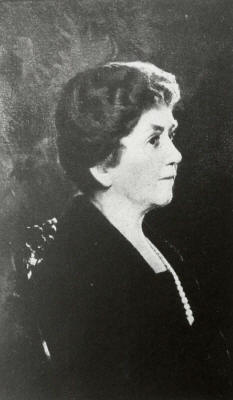 [Left: Annie Fellows Johnston
[Left: Annie Fellows Johnston
photographed from an oil painting by Herbert Ross]
As recently as December 1983, he was studying painting at Jefferson Community College and taking brush to canvas in his apartment in The 800, where he lived until last summer.
Ross, a bachelor, loves to talk about art and the people who influenced him. He studied in Louisville, at the Art Institute of Chicago and the Art Students League in New York before going to Paris in 1922 to learn from two disparate painters – Andre Lhote and Richard E. Miller.
“I wanted to expose myself to both sides – to Lhote and the modern school which didn’t take root, and to Miller, the traditionalist.” Two Ross nudes painted during that period reflect the two schools.
After he returned to the Louisville area, he met Susanne Henning, daughter of James W. Henning, a Louisvillian who was governor of the New York Stock Exchange. She married a Frenchmen and was the Marquise de Charette. (She was later divorced.)
Ross painted her portrait in his Pewee Valley studio and in the 1920s and ‘30s was a frequent visitor at her Paris apartment and the family estate in Brittany. He often accompanied her to European resorts.
He painted a portrait of her daughter, Susanne, now Mrs. Ronald R. Van Stockum of Shelby Co., Ky., in a Villa at Capri. The mother’s portrait was exhibited in 1930 at the annual Paris Salon, organized by the Societé de Artists Français at the Grande Palais de Champs Elysees, and the daughter’s portrait was shown there the next year.
Ross said, “It was a great honor to be exhibited in that gallery. One of the reviewers said there is a very beautiful portrait – the daughter of the Marquise de Charette. Her mother was so jealous, because her daughter’s portrait got this lovely newspaper criticism and her picture wasn’t noticed.”
Ross had a studio in Paris for seven years. When he and the marquise returned to the Louisville area in the late 1930s, she helped find models for him and he worked on several portraits of her. She died in 1964.
Another force in Ross’ life was his mother, Gertrude Doherty Ross. When Ross was 15 and a sophomore at Louisville Male High School, his mother decided he should study art. He had been “good at graphics” as a student at Miss Fanny Craig’s private school in Pewee Valley.
So mother and son took classes at Charles Sneed Williams’ studio, which “was right on Fourth Street in an office building across from Kaufman’s” (now part of the Galleria). One of the students was Dean Cornwell, a Louisvillian who became a famous illustrator and with whom Ross shared a roof while attending the Art Institute of Chicago.
When Williams left Louisville to paint portraits in Chicago, Ross and his mother rented a studio in the same building.
Ross painted several portraits of his mother, whose family had been in the whiskey business in Louisville. His father, William Ross, who helped run the now-defunct Ross Seed Co., died when Ross was a young man.
Herbert Ross said he never had to paint for a living; his mother supported him. He lived with her and younger sister Alice at the family home in Pewee.
“I was so happy there in the country,” he said. His studio was a converted carriage house with a stone fireplace and skylight. The family home was sold and the acreage subdivided in the late 1970s. (Note: his studio has been razed. The unattached garage at the rear of the property was built in 1984.)
Two works from Ross’ early years are on display at a Louisville antiques store, Curiosity Shop, 1565 Bardstown Road. One is a 1925 portrait of Katherine Shelman, daughter of the Pewee Valley postmistress who moved to Chicago and became a doctor. (Note: Her mother, Anne D. Shelman, was postmistress from November 4, 1920 – February 22, 1922.) The other is a still life – an elaborate box and candlestick resting on velvet drapery.
Ross also painted portraits of a number of Louisvillians, including Mrs. Mary (Mary Miller) Furnish and the late A.L. Noe, president of the Lincoln Income Life Insurance Co.
Ross sold some paintings but most were given away. He said he wasn’t interested in promoting himself and marketing didn’t appeal to him.
He explained the time-consuming way in which he worked. He got the perspective of the person or object by outlining it on a piece of glass, traced this onto paper, then started painting on canvas. Some artists have said his method was too mechanical, but he found it essential to get the proper proportions.
Ross never stopped learning. In the summer of 1977 he returned to the Arts Students League and also studied with portraitistRobert Brackman in Connecticut…While living in The 800, Ross took classes in philosophy and religion at nearby Spalding University. He was active in the Arts Club and gave the club one of his works that won a prize there…
Herbert Ross died four years after this interview in 1989.
In addition to Alice, Herbert Ross had another sister, Genevieve, living on the property with her husband, Alfred Chescheir. Their home is still standing, but is now located on a four-acre lot at 120 Peace Lane. According to Pewee Valley Town Historian Gin Chadouin, Gertrude Ross built the two-story Neoclassical-style residence in 1923 as a wedding gift to her daughter. The Chescheir home, shown below, may or may not be the “Spring Glenn” house pictured on the ca. 1930s movie map and Little Colonel game board. It was not, however, associated with any of the “Little Colonel” stories.
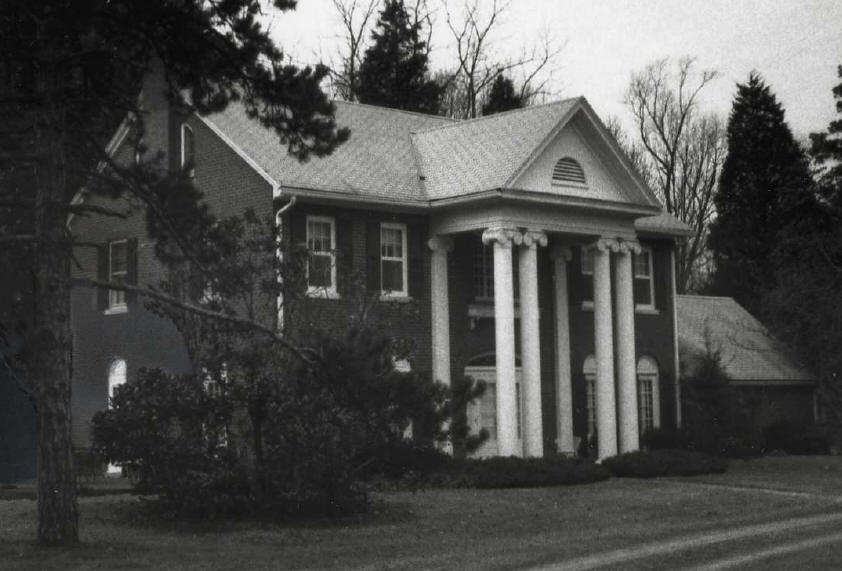
Alfred and Genevieve Chescheir home, originally part of The Ross Place estate.
Photo from “Historic Pewee Valley,” page 40.
Pewee Valley resident Steve Conn, who grew up in The Gables, recalls Lilian Fletcher Brackett’s reaction when the Ross house was sold and the property subdivided. The builder and owner of Twigmore was extremely upset by the change to her beloved Pewee Valley, he says. “I remember her saying, ‘This is what happens when you live too long.’”
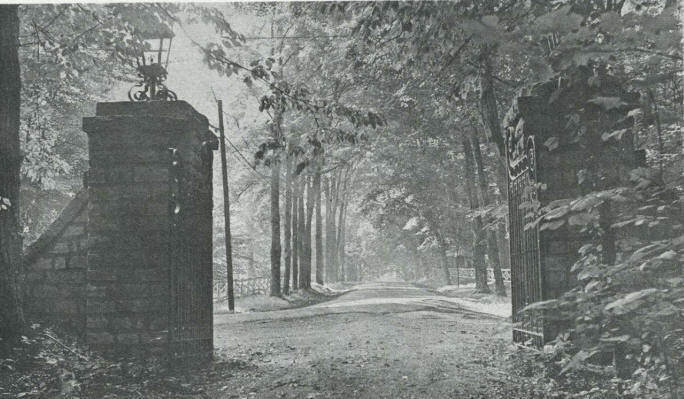
The original entrance gates to The Ross Place.
From “A Place Called Pewee Valley,” published by the Pewee Valley Centennial
Commission in 1970
One final note: Annie Fellows Johnston does mention “The Ross Place” in passing in Chapter IX of the “Little Colonel’s House Party:”
“I would take it myself,” said Mrs. Sherman, “if I were going past the post-office, but I have to drive a roundabout way to the Ross place, to get some berries I engaged for the picnic. It is very important that the letter should go on to-night’s mail train, and if one of you will drop it in the box as you go by, I’ll be so much obliged.”
However, the book was published in 1900 and the William Ross family did not own the house until 1903, so she was obviously referring to another residence – real or fictional, we can’t say.
page by Donna Russell
